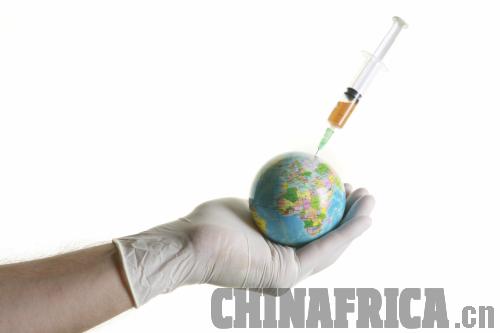| 
Malaria, anemia and malnutrition are longstanding public health problems in Africa. While all three affect impoverished children, they may also be trickily intertwined, according to new research coming out of Tanzania. Data from a paper published in PLoS Medicine last November shows that iron-deficient children taking iron supplements saw their malaria rates skyrocket by 41 percent. Conversely, healthy children who ingested the multinutrient tablets had no change in their susceptability to the parasitic killer.
"It's a two-edged sword," said Dr. Hans Verhoef, whose team oversaw the year-long study of 600 children in four Tanzanian villages. "The kids who are most likely to benefit from iron [alleviating problems like anemia] are also at the highest risk that the iron will lead to more malaria. [It] questions the whole issue of whether you can screen and supplement with iron as is currently advocated by the World Health Organization (WHO)."
Verhoef has been researching malaria since 1988, and the impact of nutrition since 1994. "You cannot separate the two in Africa," he said of the link between malnutrition and the mosquito-borne disease. Malnutrition impedes a body's immune system, increasing risk for infection. This is compounded by age, particularly when it comes to children and infants. The younger the child is, the less likely he or she has had time to build immunity against a disease like malaria.
Micronutrients help build immunity in different ways. Zinc, for example, helps an enzyme that has a basic role in DNA replication and cell division. "If your immunity cells need to divide rapidly in response to a certain infection, you may have a problem if you have zinc deficiency," said Verhoef. Iron also regulates chemical processes in the immune system and transportation of oxygen around the body; without it, anemia sets in.
When it comes to giving iron supplements to iron-deficient children, the major problem is the amount being supplied. "The dose that you provide in supplements is much higher and much more absorbable than if it comes from food," explained Verhoef. He estimates that children may absorb 20 to 30 percent of an iron supplement, but less than 5 percent of the micronutrient through diet alone. "The absorbed amount is humongous in comparison to natural foods."
This amount of iron taken all at once can exhaust the body's ability to bind it quickly to proteins."That means that for a few hours after supplementation, this iron is freely available," said Verhoef. "Parasites can access it, and they need it for their own growth."
Iron deficiency also reduces the production of red blood cells. Excess iron also increases red cell production at a rapid rate. These young red cells are also fed on by malaria parasites, said Verhoef, for propagation.
"If you gave iron at lower doses and more spread out over the day, that probably would reduce the risk," he explained. Such exposure mimics how iron is absorbed when it's part of a diet."That's the basis for why the WHO considers fortification of foods with iron to be safe."
For Verhoef, food fortification is what he hopes African policymakers will focus on. "The studies we do with supplements are a proxy of what you can theoretically achieve with food-based interventions," he explained. Supplements currently used around the continent contain doses of micronutrients that are too high, a fact unknown by many. "This is one of the examples where there's a gap between what is known from scientific studies and [what is in] policies," he said. "[To] at least reduce or make tablets available at the proper doses would reduce a big problem."
Tech Bytes
➲ China's Internet users crossed the half billion mark in 2011, according to a report published by the China Internet Network Center. As of last November, 505 million Chinese netizens were online, a figure that exceeds the populations of many countries. Even with this staggering number, Internet penetration is still low at only 37.7 percent. This statistic is expected to grow, though, given that 70 million new Internet users have emerged every year since 2008.
➲ Chinese telecom giant Huawei has designed the world's slimmest mobile phone. Unveiled in January, the Ascend P1S is 6.68 mm deep. Apple's most-current iPhone, the 4S, by contrast is 9.3 mm deep. Huawei's cellular device is said to be skinnier than a pencil, but it won't be selling as cheaply: the Android-friendly phone is expected to cost consumers $400 a pop. |